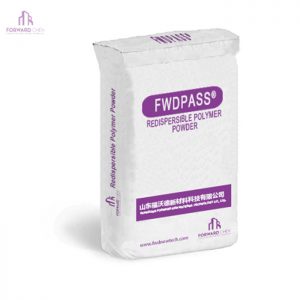Drilling fluid system
The drilling fluid system consists of a continuous phase (i.e., liquid) and a discontinuous phase (composed of solids). Sometimes, there is also an gas phase, which is an intentional design result or occurs due to the admixture of formation gas. The continuous phase can be used to classify the drilling fluid into types such as gas phase, water-based liquid, or non-water-based systems. These liquids are formed by the mixture of liquid and solid components, and each component is intended to modify the specific properties of the drilling fluid, such as its viscosity and density.
 Water-based drilling fluid, often referred to as water-based mud, is the most common and diverse type among the three drilling fluid types. Its composition ranges from a simple mixture of water and clay to complex inhibitive or clay-stabilizing drilling fluid systems with multiple components. In recent years, engineers and scientists have been striving to improve the inhibition and thermal performance of water-based systems to compete with non-water-based drilling fluids commonly used in complex drilling environments.
Water-based drilling fluid, often referred to as water-based mud, is the most common and diverse type among the three drilling fluid types. Its composition ranges from a simple mixture of water and clay to complex inhibitive or clay-stabilizing drilling fluid systems with multiple components. In recent years, engineers and scientists have been striving to improve the inhibition and thermal performance of water-based systems to compete with non-water-based drilling fluids commonly used in complex drilling environments.
Plastic clay drilling fluid is being mixed and stirred.
In non-water-based drilling fluids (often referred to as synthetic-based mud), the continuous phase may consist of mineral oil, biodegradable esters, alkenes, or other variants. Although such systems are usually more costly than water-based drilling fluids, they often provide excellent wellbore control, thermal stability, lubrication, and drilling speed, which may help reduce the overall cost of operators.
In fractured rocks, or in environments where the borehole cannot support a column of water without significant fluid loss to the formation, drilling personnel use air, atomization, or foam systems to help remove debris from the borehole and maintain wellbore integrity.
Basic functions
The formulation of drilling fluid aims to achieve multiple functions. Although this list is long and diverse, the key performance characteristics are as follows:
Controlling formation pressure - The drilling fluid is pumped into the drill string, through the bit, and returns from the annular space. In open-hole wells, the static water pressure generated by the drilling fluid column is used to counteract the increase in formation pressure, otherwise the fluid in the formation may enter the well, potentially leading to the failure of well control. However, the pressure generated by the drilling fluid cannot exceed the fracture pressure of the rock; otherwise, the drilling fluid will infiltrate the formation - this is called "cyclic loss".
Removing rock debris from the borehole - The circulating drilling fluid carries the rock debris (i.e., rock fragments) generated by the drill bit to the surface. Maintaining the drilling fluid's ability to carry these solid particles to the top of the borehole - that is, its carrying capacity - is crucial for efficient drilling and minimizing the possibility of sticking. To achieve this, drilling fluid experts work with the driller to carefully balance the rheology and flow rate of the mud to adjust the carrying capacity while avoiding excessive equivalent circulating density (ECD) - that is, the actual mud density plus the pressure drop in the annulus above a certain point in the borehole. If not controlled, excessive ECD may lead to cyclic failure.
Cooling and lubricating the bit - When the drilling fluid passes around and wraps around the rotating drilling equipment, it helps cool and lubricate the bit. Heat is transferred to the drilling fluid, and the drilling fluid carries the heat to the surface. In extremely hot drilling environments, heat exchangers may be used at the surface to cool the mud.
Transmitting hydraulic energy to the bit and downhole tools - The drilling fluid is discharged to the surface.
Recommended Products of HEC
In the oil drilling industry, low-viscosity HEC is mainly used to reduce water loss, while high-viscosity HEC is used as a thickener in well-completing or finishing fluid.
FORWARD CHEM HEC 100000H is suitable for Drilling Fluid Additive. Welcome to consult and obtain samples

